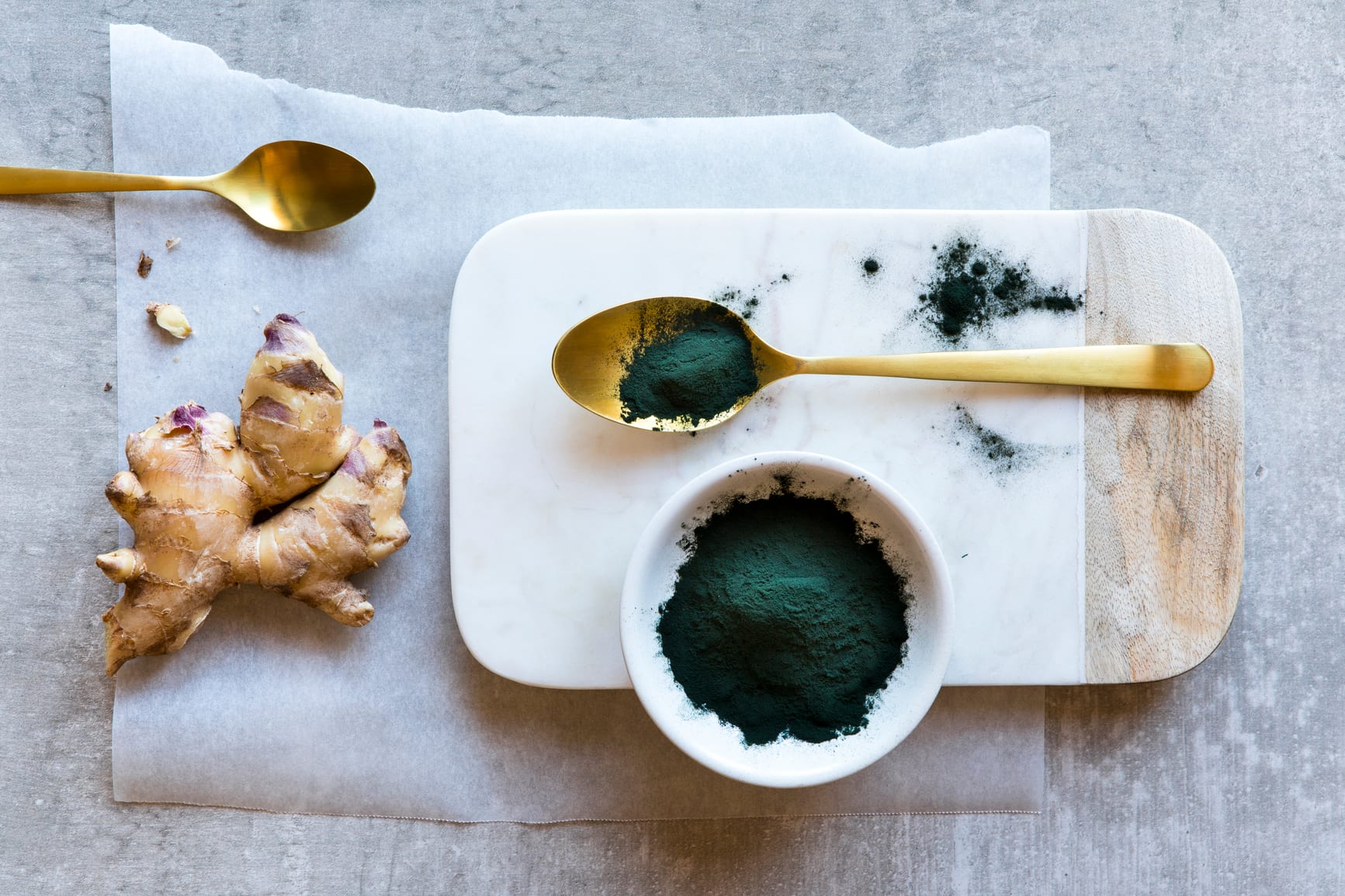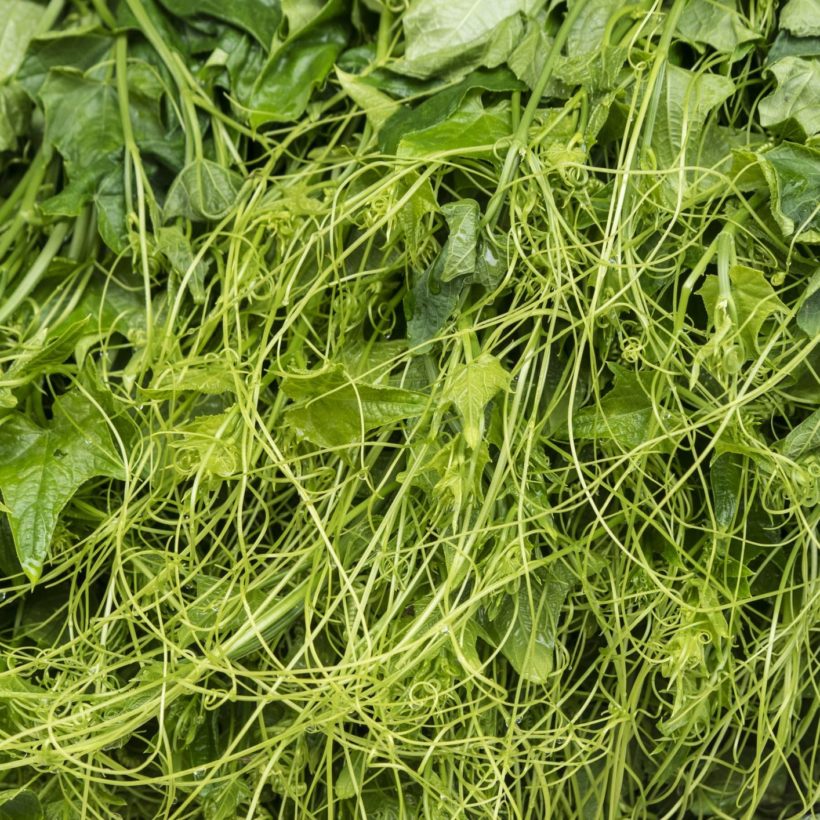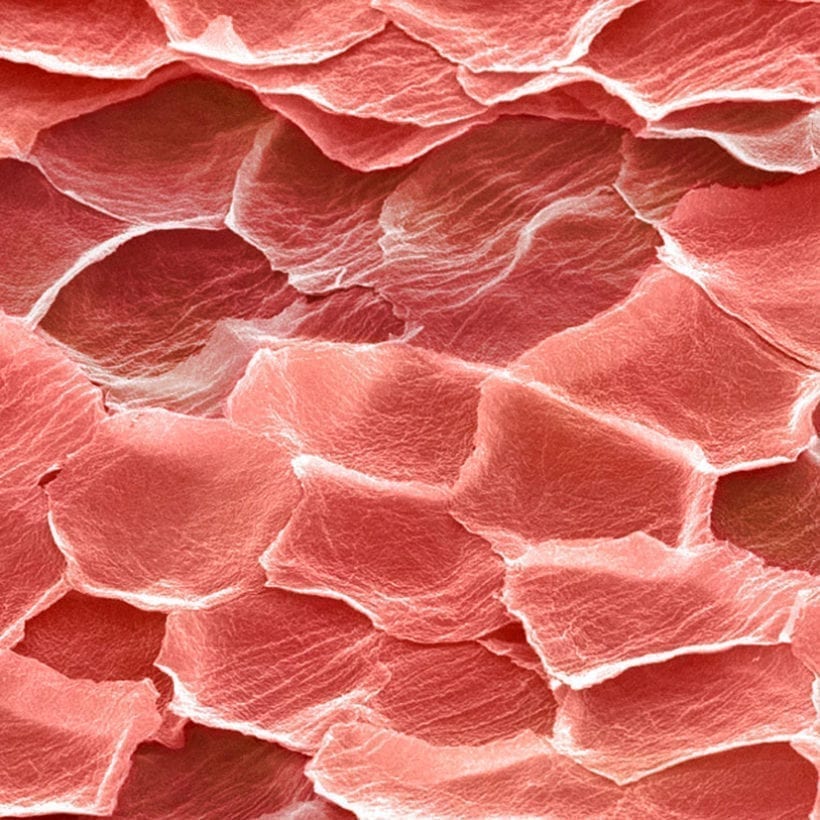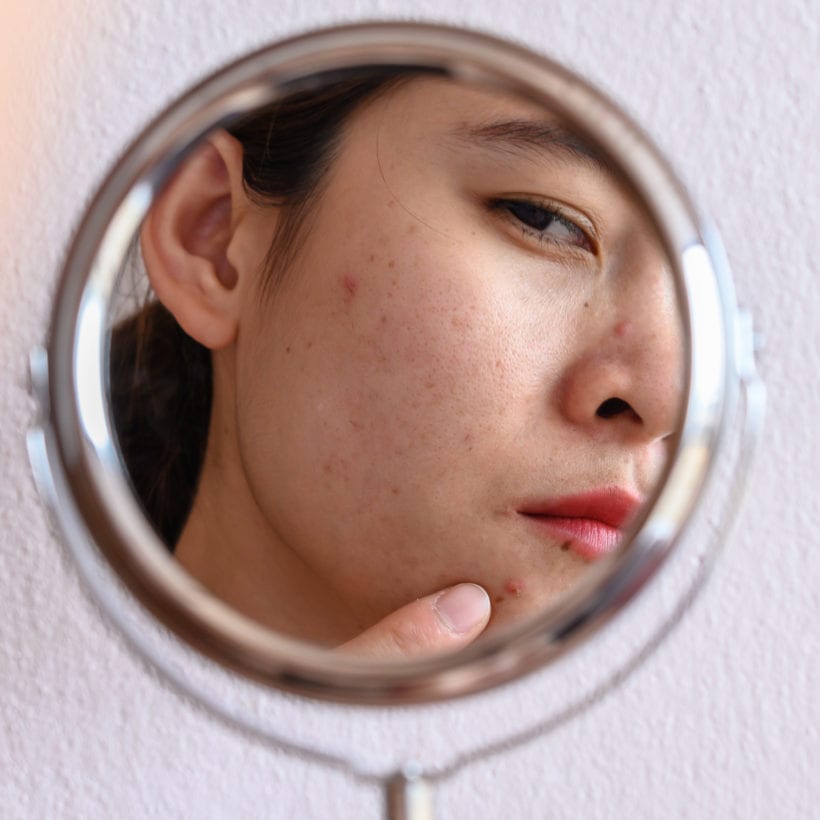Chances are you’ve seen people chugging a mysterious green liquid all over social media. It’s not just any green juice, it’s likely chlorophyll, chlorella, or spirulina, which have been trending in the beauty scene lately for their supposed ability to improve acneic skin, decrease inflammation, and help skin look glowier than ever.
But we wouldn’t just leave you to your own devices simply leaving you to say #TikTokMadeMeDoIt.” We enlisted the help of Vanessa Coppola, FNP-BC, owner of Bare Aesthetic Medical Spa to break down what exactly all this green stuff is about, what they do, and if they’re worth the hype.
What’s the difference between chlorophyll, chlorella, and spirulina?
You may have heard of chlorophyll in high school biology class — it’s the substance that makes plants green so they can absorb the sun’s energy as they undergo the process of photosynthesis. Chlorophyll is naturally found in algae like spirulina and chlorella, as well as green vegetables. All it takes is just a couple of ounces of spinach or parsley to give you the same amount of chlorophyll as an oral chlorophyll supplement. When ingested, it combines toxins in your body together to prevent them from absorbing — they’re then expelled in your next bowel movement.
How can I make my green drink?
Chlorophyll is typically found in liquid drop form and you can add 10-15 drops or 100 to 300 milligrams to a glass of water. Think about it: one cup of spinach has about 24 milligrams of chlorophyll and one cup of parsley has 19 milligrams. To receive the maximum benefits, you would need to eat 10 cups of spinach or parsley each day.

You can also mix in a spoonful of chlorella or spirulina powder — both of which are safe, digestible forms of plant algae, according to Coppola. “These are considered dietary supplements and are of particular interest lately given the ongoing issue with climate change and the ability to produce viable crops,” she says. “[They] require less energy, land, and resources to produce as compared to livestock.” Chlorella and spirulina are good sources of protein, vitamin B12, health fats, and antioxidant nutrients (spirulina has higher levels of vitamins and good-for-you fats).
What are their skincare and health benefits?
The social media craze around chlorophyll water is geared towards being a cure for acne-prone skin. However, “there is currently no conclusive scientific evidence to support claims that drinking chlorophyll water can treat acne,” she says. “There is some small promising insight emerging that drinking chlorophyll water may help reduce inflammation due to its high antioxidant profile. Inflammation can often play a role in acne formation; however, the role of chlorophyll or spirulina is purely theoretical at this stage. Antioxidants, in and of themselves, may be beneficial to our bodies in helping to reduce inflammation, fight free radicals, and promote cellular repair, but their role-specific to acne is less clear. These same antioxidant properties are, in theory, beneficial to our skin, which is particularly susceptible to free radical damage and cellular breakdown,” she says.
Bottom line: “There may be overall skin rejuvenation and repair benefits from taking a supplement high in antioxidants such as drinking chlorophyll water, however, a direct link has not yet been established.” A study showed that chlorophyll could also have radiation-reversing powers.
But what about chlorella and spirulina?
Chlorella and spirulina differ in that spirulina’s benefits are more defined. Studies have shown that spirulina, which is one of Earth’s oldest lifeforms, is protein-dense, lowers your cholesterol levels, reduces high blood pressure, reduces inflammation, and packs skin with antioxidants. It’s more difficult to scientifically confirm the benefits of chlorella, as its cells are harder to break down.
“Spirulina has been used as a supplement to support gut health and what we refer to as the gut microbiome, which is a healthy balance of microorganisms that live in our digestive tract to help support a healthy body. Our body’s microbiome extends to our skin as well. It has been hypothesized that maintaining a healthy microbiome can be very beneficial to maintaining healthy radiant skin. Again, this circles back to a reduction of inflammation and the beneficial antioxidant properties that help to neutralize harmful free radicals and promote cellular repair.”
Does it matter whether you consume or apply chlorophyll, chlorella, or spirulina topically?

There’s a reason the trend seems to be about drinking your algae rather than applying it topically via skincare products (other than the fact that drinking blue-green water is eye-catching on your TikTok feed). “When applied topically, these supplements are likely to become unstable in their raw form and likely change under oxidation, without being formulated in a stabilizing vehicle — for example, a gel, cream or lotion. They are likely more beneficial in their oral form, although spirulina may have antimicrobial properties when used topically, which may be beneficial in some skin conditions, however, this has not been proven. If you would like to try chlorophyll, chlorella, or spirulina topically, it is best combined in a gel or lotion, or in a mask so that the antioxidant properties of the supplement are more stable, and therefore likely more effective.”
How do you know if they’re “working” on your skin — and how long does it take to see the effects?
As with many skin care treatments, you’ll have to be patient to see results. “Benefits from nutritional supplementation usually take 30-90 days to manifest as part of a healthy diet and lifestyle,” she says. You’ll know it’s working if your skin is feeling “more supple, smoother and tighter [but not uncomfortable] after use. Although not scientifically proven, most will agree that your skin will look more radiant.”
Why do you think these buzzy ingredients are having a moment right now?
It turns out the hype around chlorophyll, chlorella, and spirulina is more than just people having more time on their hands due to the pandemic: “I think there has been a definitive movement in our society towards sustainable brands and ecologically conscious products, and both chlorophyll and spirulina fulfill both of these attributes as an ecologically protective and sustainable nutritional supplement,” she says.
Are they worth a shot?
None of these ingredients will single-handedly cure your skincare woes, but when added to your existing skincare routine, a healthy diet, and regular exercise, it could be a great part of a more holistic approach, she says. “As with any type of nutritional supplementation, you want to first consult with your primary care provider to check for any potential interaction or allergies with your current health status and your current medication intake, vitamins and supplements. These algae supplements are thought to have anti-inflammatory properties, and possible antimicrobial properties when used topically, which may be beneficial to the skin. As with any topical application, a spot test is always recommended to detect any potential sensitivities or allergies.” If chlorophyll water encourages you to drink more H2O throughout the day, then at the very least you’ll stay extra hydrated.
We only recommend products we have independently researched, tested, and loved. If you purchase a product found through our links, Sunday Edit may earn an affiliate commission.







